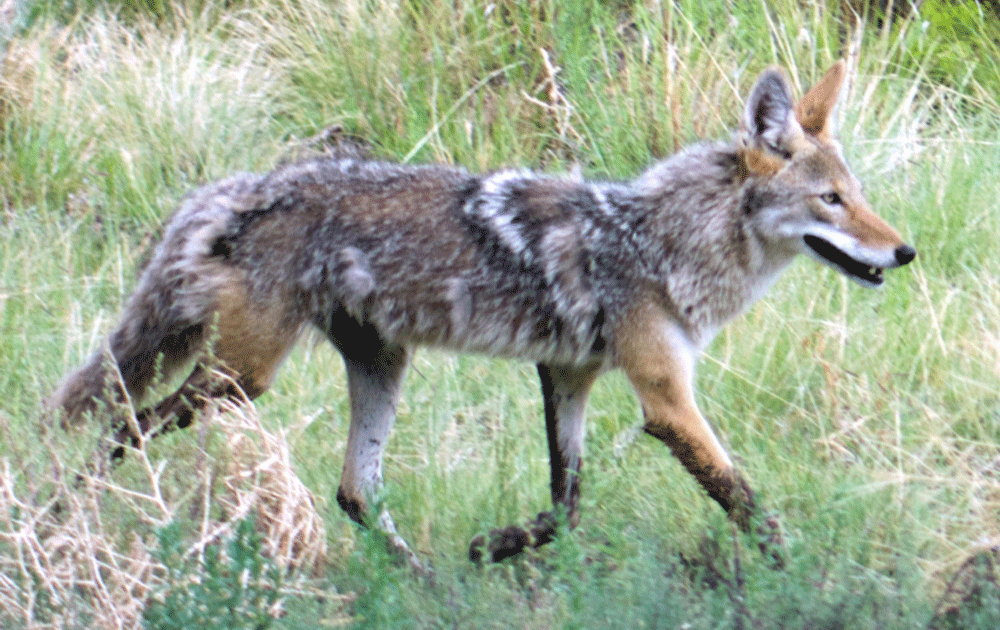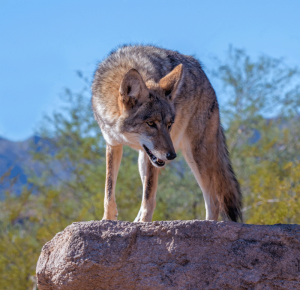How to Trap Coyotes?
 Although coyotes are important to the ecosystem, they cause problems around human settlements, like killing livestock and pets. Sometimes, after trying several strategies to get them off your yard, some might prove relentless. This leaves you with no choice but to trap them. Trapping is an art. It requires a proper understanding of the terrain, the coyote’s behavior, the right trap, and bait to use. In this post, we’ll explain the processes involved in trapping coyotes.
Although coyotes are important to the ecosystem, they cause problems around human settlements, like killing livestock and pets. Sometimes, after trying several strategies to get them off your yard, some might prove relentless. This leaves you with no choice but to trap them. Trapping is an art. It requires a proper understanding of the terrain, the coyote’s behavior, the right trap, and bait to use. In this post, we’ll explain the processes involved in trapping coyotes.
Preamble…
Trapping usually requires a trapping license, so make sure you secure one before trapping coyotes.
Trap Preparation
Coyotes are strong animals, so you need a very powerful trap. A good trap is the 550, MB550 coyote offset jaw. Cage traps are generally very ineffective.
Furthermore, coyotes have a great sense of smell. Therefore, ensure that your trap is free of human scent and oil. This can be achieved by using several boiling and degreasing methods.
Also, handle the trap with scent-free gloves while setting it.
Trap Setting
For novices, setting an effective trap can be challenging. However, accounting for these following factors will produce astounding results.
- Location
Location scouting and selection is the single most important factor when setting a trap. Some of the things to bear in mind while selecting a location include:- Scout for places where the coyote regularly visits: Look out for signs like droppings near pastures or pens.
- Opt for high ground or ridgetops: In an open field, coyotes typically travel on high ground so that they can quickly drop to a lower elevation if a threat arises. Use this to your advantage. Also, setting your trap on a high ground reduces the likelihood of catching smaller animals like opossums, raccoons, badgers, and skunks.
- Good locations include coyotes’ travel roads, especially at road crosses. Traps can also beset at the edge of a field or livestock trails – places where the coyote is sure to travel along.
 Choosing the Appropriate Trap Set
Choosing the Appropriate Trap Set
There are different trap sets for coyotes, depending on the situation. They include:
- Scent post: A trap can be set where a scent post is found. The scent post should be placed so that wind blows the smell across the coyote’s path.
- Dirt Hole: Dirt hole sets are placed close to the coyote’s path. To make a dirt hole set, dig a hole of about 10 inches in diameter and 8 inches deep. The trap is then placed 6 to 8 inches in front of the hole. In the hole, place a bait and cover it with dirt and grass. Any remaining dirt should be scattered to trick the coyote into believing that another animal has dug the hole.
- Trail set: A trail or blind set is best used when the coyote is regularly traveling along a trail. No scent or bait is used with a trail set. A trail set’s major drawback is that other livestock or animals using the trail might get caught.
- Carcass set: Traps set in the vicinity of carcasses are effective. To avoid catching unintended animals, the trap should be set along the path leading up to the carcass. Catching the Coyote This involves using the appropriate bait, lure, or set, based on the trap set employed.
Some general things to keep in mind are:
- Do not use too much lure or bait. Remember that selecting the right location is more important.
- Different baits can be used, from meat trimmings to bones to fermented herring. Also, coyotes love dog food, so it can be used.
- Lures contain odor that coyotes like. A common example is beaver castor. One homemade lure is to break four dozen eggs into a jar and let it sit for a couple of months.
Finally, the trap should be checked regularly. Trapped coyotes are aggressive. Moreover, coyotes can be carriers of rabies and other diseases. Therefore, seeking a professional’s help in removing a trapped coyote is prudent. Due to the immense pain that traps inflict, most jurisdictions require that the coyote be euthanized after being caught.
Conclusion
Many consider the trapping of coyotes to be inhumane. Therefore, other methods to keep them off should first be considered. You can check out the post on ‘how to keep coyotes off your property’ to learn about some of these humane methods. Trapping should only be used as a last resort.

 Choosing the Appropriate Trap Set
Choosing the Appropriate Trap Set